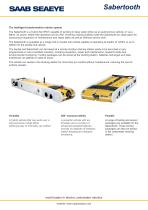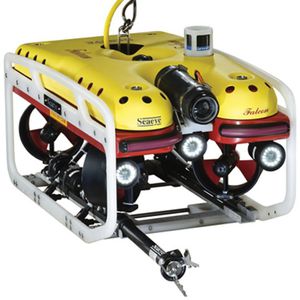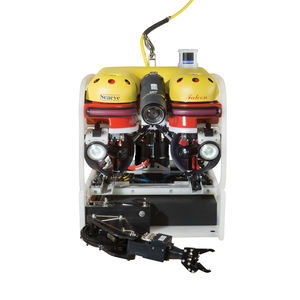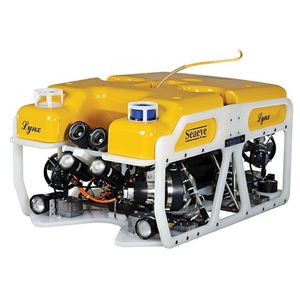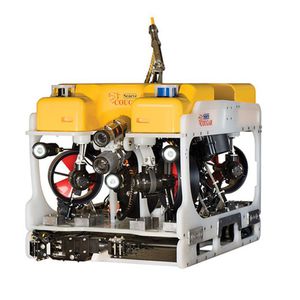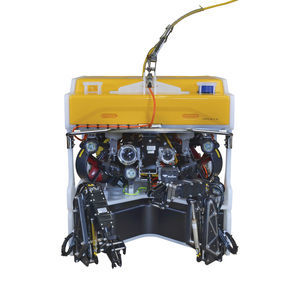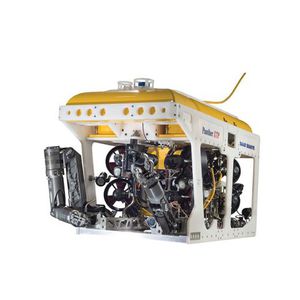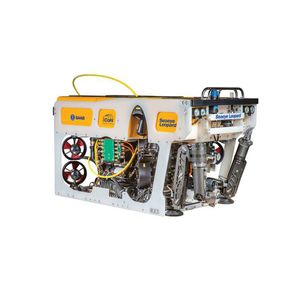
Intervention underwater ROV Sabertooth












Add to favorites
Compare this product
Characteristics
- Type
- intervention
- Maximum depth
1,200 m, 3,000 m
(3937'00" , 9842'06" )- Length
3,800 mm, 4,094 mm
(150 in, 161 in)- Width
700 mm, 1,350 mm
(28 in, 53 in)- Height
500 mm, 670 mm
(20 in, 26 in)- Weight
650 kg, 800 kg, 1,300 kg, 2,000 kg
(1,433 lb, 1,764 lb, 2,866 lb, 4,409 lb)- Forward thrust
100 kgf
- Lateral thrust
40 kgf, 90 kgf
- Vertical thrust
80 kgf, 160 kgf
- Speed
4 kt, 5 kt
- Battery capacity
10 kWh, 30 kWh
- Voltage
380 V, 480 V
- Frequency
Min.: 50 Hz
Max.: 60 Hz
Description
The Sabertooth is a hybrid AUV/ROV capable of working in deep water either as an autonomous vehicle, or via a tether. Its power, tether-free operation and its 360° hovering manoeuvrability make the Sabertooth an ideal option for autonomous inspection or maintenance and repair tasks as well as offshore survey work.
The Sabertooth is available as a single hull or double hull vehicle capable of operating at depths of 1200m or up to 3000m for the double hull vehicle.
The double hull Sabertooth can be based at a remote location docking station ready to be launched on pre-programmed or man-controlled missions, including inspection, repair and maintenance, research tasks and environmental monitoring. Tooling packages can be stored at the docking station, batteries recharged and data transferred via satellite or cable to shore.
The vehicle can reside in the docking station for more than six months without maintenance, reducing the cost of surface vessels.
The surface equipment for the Sabertooth includes a surface control unit comprising a computer with the graphical interface software displayed on a monitor and a fibre optic receiver for communication between the surface and a tethered vehicle.
Additional operator equipment includes a keyboard and mouse.
A WLAN Access Point with an antenna is used when the vehicle is in autonomous mode.
A battery charger fitted in a mobile case can recharge the vehicle at the surface. The unit provides a charging power of 3.3 kW (lower power when the input voltage is below 200 VAC) with an input power of 100-264 VAC (single phase).
An automated tension control winch is used in conjunction with a tether when working in manual mode.
Catalogs
Sabertooth
5 Pages
Seaeye ROV Comparison Chart
1 Pages
Exhibitions
Meet this supplier at the following exhibition(s):

*Prices are pre-tax. They exclude delivery charges and customs duties and do not include additional charges for installation or activation options. Prices are indicative only and may vary by country, with changes to the cost of raw materials and exchange rates.


